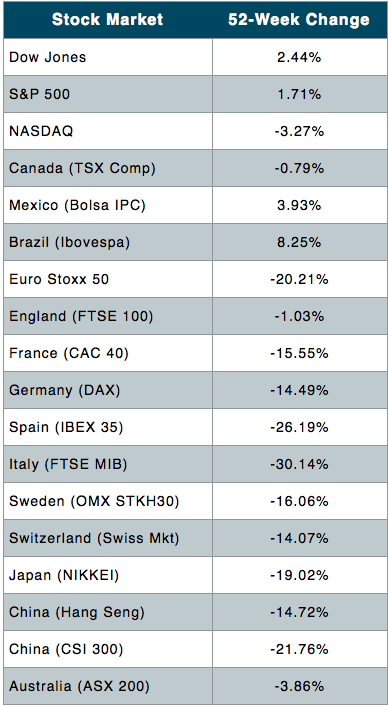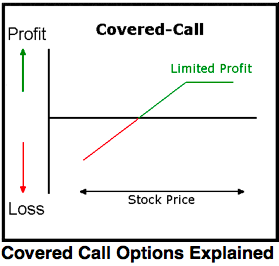Wealth Building Strategies
 Table of Contents:
Table of Contents:
- Weekly Blog Post: What Was Your First Real Lesson in Leadership? Here’s Mine.
- Business Tip of the Week: A specific action you can implement immediately.
- Ask Eamonn: Each week I answer subscriber questions.
- Top 3 Trending: Business stories of the week.
- Events: My speaking, panels and other events.
My First Real Lesson in Leadership
In 1986, I had just graduated from engineering school with my newly-minted diploma, $30,000 in debt (1986 dollars), with no immediate prospects for employment. Two years previously, I had driven across the country from Vancouver sleeping in a car I had purchased for $55, as the result of placing 30 simultaneous stink bids on surplus auction vehicles, and blew a piston only 50 km from the school forcing me to hitchhike the rest of the way to start my studies.
As a new graduate, I made my way to Toronto, determined to kick-start my career. After only two weeks, I was fortunate to land a job with the Ford Motor Company (Electronics Division) as a Midnight Shift Production Supervisor, at their 1,400 person advanced automotive electronics manufacturing facility in Markham, Ontario. When I arrived at 11:00 pm on a Sunday night to supervise my first shift, I was surprised and slightly horrified to find that I was responsible for directly supervising 85 production line workers, most of whom were twice my age and who had seen young, eager engineers like me come and go many times. This was definitely not an experience I had prepared for, however, I made one very important decision at the beginning of my shift that night, which enabled me to be successful in that role and then helped catapult my career at Ford and other companies.
I decided that rather than trying to dazzle all 85 people with my brilliance at recently acquiring an electrical engineering degree (good luck!), I would do one simple thing – connect with each person as an individual! I thought the best way I could make that one-on-one connection would be to learn first and last names of each person by the end of the week. So, for the 5 days, I would appear on the shift as the “Supervisor” but in reality, they were tolerating my presence and supervising me while deciding if I was worthy of leading them, and if I could stay or go. Meanwhile, each night I would take out a piece of paper on which I had drawn a map of the production line with the corresponding first and last names of each person. I proceeded to try any tactic I could memorize their names, such as using it repeatedly in a conversation like some Dale Carnegie Seminar on steroids. To my utter astonishment, I very quickly learned each name and gained their confidence and respect. After nine months in this role, and showing respect for the people that worked for me, my hard-boiled manager, who himself had started on the production line, saw potential in me and moved me onto roles with greater leadership responsibility.
My first real lesson in leadership was complete. I learned that if you do the small things well for people, they will trust you with the big things. I learned that leadership is about the respect we have for others in the little things we do, so we earn the right to be part of someone’s life, not be granted the right to manage his or her world. I learned it’s about having the courage to do something hard when everybody is watching and success is not a guarantee. It’s about the degree of caring we show for others, as human beings, not as colleagues, co-workers, associates or employees. I learned that business is about people, first and foremost.
By Eamonn Percy
Business Tip of The Week:
To connect with people, take the time to show you care by making the effort to get to know them, their hopes and dreams, and in return, they will care about you.

….or what to do with $15K Inheritance from Grandma
1. A a creative conservative investment for those frustrated with low interest rates of 1-2%. An investment in the the BMO Covered Call Utilities ETF.
Why?
1. As of as of July 29th/2016 it has generated an annualized yield of 6.65%
2. It delivers a tax-efficient monthly income from dividend paying telecommunications and pipeline dividend stocks.
3. The covered call strategy provides a partial hedge against market declines as well as while increasing income.
4. Its simple. Covered call ETFs make the relatively sophisticated strategy available to individual investors. (the average person usually doesn’t have the experience or know-how to execute option strategies on their own, and most advisers aren’t licensed to sell options).
How do they play it?
Contact your broker or bank and invest in BMO Covered Call Utilities ETF symbol ZWU (Zebra Whiskey Uniform)
Who is this appropriate for?
This is a conservative investment that ideally should be held for an entire market cycle, which generally lasts 4 years.
“covered call ETFs should, over a period of five years or longer, deliver returns that are 1.5 percentage points higher on average than comparable stock market ETFs. Call products will underperform in fast-rising market and outperform in sideways and down markets. Sometimes, the outperformance will come in the form of losing less money.” – Eden Rahim of Horizon Exchange Traded Funds
….related: Also using option strategies the following BMO ETF below is a more aggressive and unconventional alternative that sells puts against money in T-Bills aiming to gain an annualized return of 8%. By selling out of the money puts the fund is intended to protect investors from a 10-`5% decline. That said a 20% decline in the stock market would affect the strategy negatively.
….read more: BMO ETF aims to profit from writing puts in a more aggressive strategy designed to yield 8% annually.
Also, Horizons Enhanced Income Gold Producers ETF uses the covered call strategy gain exposure to North American base gold mining and exploration companies while generating monthly distributions of dividend and call option income. An investment to consider given Gold is very likely in a developing bull market.

 “Heroes are made by the paths they choose, not the powers they are graced with.”
“Heroes are made by the paths they choose, not the powers they are graced with.”
― Brodi Ashton
Action, Courage, Character, Tenacity
Great leadership is built upon many small actions we take throughout the day, punctuated periodically by severe crises and significant decisions. However, in order to prepare as leaders for the severe crisis and significant decisions we must practice daily leadership, so when called upon, we have the mental and emotional preparedness to deal with the significant challenges of the moment.
I have found the ACCT a great reminder of the important aspects of being a daily leader. Being significant in the small actions of the day puts me into the frame of mind to be the leader of the moment.
Action – Great leadership is about getting things done. Period. It’s about outcomes not activity. It’s about achieving results and making progress towards a worthwhile goal. It’s about overcoming fear and being hungry to achieve success, all of which require action. Nothing gets done without action.
Courage – Being in positions of leadership comes with great responsibility. In any organization, whether a business, government, church or family, the weighty decisions are made first and easily by those in more junior roles, while the substantial decisions are elevated to the top. A courageous heart gives us the fortitude and faith to make those decisions with the best information we have at the time and with our best judgment. A daily dose of taking courageous actions helps build our moral fabric and makes it easier to make the difficult decisions, when the time ultimately arrives.
Character – While reputation is the way others see us, character is the way we truly are. Great leaders need to be very mindful of their character which includes integrity, humility, gratitude, caring, wisdom, self-control, positive attitude, a loving nature, and sense of fairness. By being aware of these traits and working hard to develop and maintain them throughout the day, we build our character and become better human beings and become more able to affect positive change. Be mindful of the very small things you do throughout the day that can either erode or build your character.
Tenacity – Many people fail to become exceptional leaders because they have trouble overcoming obstactles. Great leadership requires the vision AND ability to see beyond the obstacle and find way to solve problems and achieve progress. Tenacity can be practiced, not necessarily by looking for problems, but by overcoming the vicissitudes of life in a positive, cheerful, focused and productive manner, seeking the help of others, coming up with creative solutions or mitigating the impact of the problem. Overcoming failure often comes with lessons that accelerate our future success, so you practice overcoming challenges in a low-risk environment in preparation for the day it really counts.
Business Tip of The Week:
Focus on the few critical things you do well, and outsource or stop doing all else. We can only win by focusing on the tasks that leverage your natural talents and skills.

“Today’s money,” says economist George Gilder, “tries to cheat time. And you can’t do that.”
It may not cheat time, but it cheats far easier marks – consumers, investors, and entrepreneurs.
It took us a moment to understand what Gilder meant. Then we realized he’s right.
Time is the ultimate limitation… the ultimate truth… the ultimate fact.
Time the Taskmaster
You’ll recall. There are facts and there are myths. The facts are true no matter what you think. Everything else is opinion, conjecture, or claptrap.
Elizabeth, your editor’s wife, has a different relationship with time than he does. He sees it as a taskmaster… strict and unyielding.
The sun rises. It sets. If you goof off during the daylight hours, the opportunity will be gone forever. That part of your life will evaporate, like the morning dew, never to be seen again.
Elizabeth takes it personally. If she is running late, she expects time to slow down and wait for her. She thinks the sun ought to linger a little longer before saying goodnight… giving her time to finish her email before starting dinner.
She is annoyed when it doesn’t.
Elizabeth treats time like a movie she is watching on her computer. When the telephone rings in the middle of it, she wants to put time on hold, until she is ready for it to resume… or even push a button to make time back up, so she can relive particularly interesting segments.
“The party starts at seven; it’s already quarter after; we’re late,” we say grumpily, after waiting in the car.
“Well, maybe you could drive a little faster so we could get there on time.”
 No More Real Money
No More Real Money
Alas, time does not cooperate.
Time is a “fact,” not a myth. It does not back up. No matter how much you wish it would slow down… or what you think about it… time moves on.
Real money is similarly indifferent to the wishes of tardy commuters, cash-short consumers, and manipulating Fed chiefs.
Like the ancient Greek Moirai, the goddesses who measured out the thread of life, real money is beyond the control of man.
The last of the three goddesses, Atropos, was known as “she who cannot be turned.” It was she who cut the thread when your time came to an end.
Real money, like real time, cannot be jigged or jived. It can’t be stretched or compressed. It is what it is.
But that was then… pre-1971. This is now.
Now, we have no more real money. Instead, the world has a gaggle of imposters – the dollar, the euro, the yen – all stage managed by benighted central bankers.
The miracle of real modern money – which has been around only for a few thousand years – is that it could function across time and space. It allowed people to trade with others far away who they didn’t know, often crossing language, cultural and religious barriers.
Money in hand, the deal was done. It made no difference what they thought or what happened to them later.
Money made it possible to accumulate wealth (capital), too.
A crop of tomatoes or lettuce might be worthless in a few days. But with money, the farmer could hold the real value of his past work far into the future. Using money, he could also invest the fruits of his labor in new and more fruitful projects.
Rigged System
The new money substitute, which we’ve lived with for 45 years, is a fraud.
A dollar in 1971 is worth about 17 cents today. In other words, it has lost roughly 80% of its buying power. Had you been counting on it to preserve the value of your work from the previous decade, it robbed you of everything from 1960 to 1968.
The phony dollar has misled an entire generation into spending money it didn’t really have… doubling or tripling its debt-to-earnings ratio… and shifting more and more of its real wealth to the least productive people – the Parasitocracy.
In 1971, the financial services industry was just 1.25% of GDP. Today, it’s more than three times that much. In terms of real output, finance is still tiny. But that’s now where the money is!
Here’s an item from Monday’s paper: The biggest six banks in America raised their CEO pay by 7.6% last year – about three times faster than GDP growth.
The “Big Six” executives now earn an average of $13.1 million a year. JPMorgan Chase boss Jamie Dimon is in the lead with a $27.6 million pay package.
The richest 1% of the population, meanwhile, has increased its share of national wealth from 25% to 40%. And the richest 1/10th of 1% has done even better – going from 10% of national income in 1971 to 20% today.
Lucky?
Not really. The system was rigged with the new money.
More to come… as we continue connecting the dots between our money, our economy, and our Parasitocracy.
Stay tuned…
Regards,
Bill
The U.S. stock market is gracing all-time highs, but look abroad and you get a very different picture…
As you can see, many foreign markets are in or near bear market levels (defined as a drop of 20% or more from the high).

Bear markets are a great time to pick up great assets on the cheap. So if you want to find good value for your dollar, you should look abroad.
In Bonner Private Portfolio, we currently own just five stocks. One is Swiss and one is French. Thanks to Europe’s troubled markets, we were able to purchase these stocks at about half their all-time highs. Yet they are global companies that do most of their business outside of their home countries.
You can buy these stocks just as easily as you would buy IBM or Microsoft. No fancy brokerage account needed. The public disclosures are in English. They are not hard to follow. And they have a long history of paying dividends and are rock solid financially.
My senior analyst and I continue to fish in these beaten-up markets for more Private Portfolio bargains…
We just returned from a ten-day trip through Italy. Italy is one of the cheaper stock markets in the world, based on a weighting of various factors like price to earnings.
The Italians often get unfairly pegged as lazy Southern Europeans who don’t want to work. In Milan, we visited the stock exchange. The sculpture in front of it probably doesn’t help this image:
 “The Finger,” by Maurizio Cattelan, was donated to the city of Milan in 2010. It stands before the Italian Stock Exchange.
|
But the truth is, the Italians put in more hours than the Germans. (As one of my friends joked, “The Italians love capitalism. Look at the mafia.”) And Northern Italy is on par with Germany in terms of productivity. Moreover, there are some great companies and brands in Italy, all based in the north: Luxottica (maker of Ray Ban sunglasses), Ferrari, and Giorgio Armani to name a few.
Right now, we’re investigating a basket of Italian stocks with fantastic, undervalued assets. And our field trip yielded some interesting insights about the broader markets as well… We’ll be sharing these with our partners in the next issue of Bonner Private Portfolio.
The recommendation I leave you with today is this: The U.S. stock markets are at all-time highs. If you want to find bargain stocks, go abroad.
related:
Check out the two stocks from Tyler Bollhorn’s Strategy of the week – Stockscores Weekly Perspectives

 We have heard it so many times, “What gets measured, gets managed!”. Yet, many business leaders today often overlook this simple rule and neglect to implement an effective metrics system that drives performance, monitors results and creates enduring shareholder value.
We have heard it so many times, “What gets measured, gets managed!”. Yet, many business leaders today often overlook this simple rule and neglect to implement an effective metrics system that drives performance, monitors results and creates enduring shareholder value.
Why is this? I believe many managers either think it is too complicated, not effective, and/or time-consuming with little impact on the bottom line. Nothing can be further from the truth. An effective metrics system is easy to implement and maintain, has an incredible impact on the health of the business and is one of the most critical levers that can be applied to accelerate the growth of your business. Properly designed and implemented, a metrics system can be the one, truly objective voice that speaks to you on the current health and future viability of the business.
If you are interested in setting up a simple system to truly measure effectiveness, do the following:
Keep It Simple
Strive to keep the entire system as simple and easy as possible. This can be done by minimizing the number of corporate metrics to be measured, reported and actioned. It should be between 3 and 6 key performance indicators. I successfully ran and grew a $75 million per year business with 6 key performance indicators, reportedly monthly on a single sheet of paper, including graphs. While there are many great software solutions to manage key performance indicators, I would proceed with caution and focus on a very simple system that truly measures what is most important in an easy, low-cost and effective manner.
Focus on the Critical Few, Not the Trivial Many
Pick the few critical indicators that will have the biggest impact on your customer, shareholders and employees. Determine what is most important to those three groups and determine one or two metrics per group that will have the biggest impact, for the least amount of effort. Avoid the trap of trying to measure too many items because ‘everything is a priority’, by setting the right tone for the organization, and showing courage as a leader.
Pick Both Leading and Lagging Indicators
Not all metrics are created equally! By understanding the linkage between cause and effect you can determine which measures are leading indicators of business growth (ie. sales funnel health) and which are lagging indicators (i.e. revenue, EBITDA). By picking a balance between the two you can continue to monitor not only the current state of business, but its trajectory and likely future state.
Delegate To One Person
Make a single person in the organization responsible for implementing, maintaining, and reporting on the key performance indicators. Without question, that person will rely on the assistance of many other people to make an effective system: however, you must have the ability to turn to only one person to ensure the system is effective. Once the system is up and running, it should only take a few hours a week to maintain.
Think in Terms of A “Commit, Plan, Do, Measure, Act” Cycle
Set up a simple system based on the following actions: COMMIT to measuring to an objective system of measuring the effectiveness of your leadership and the health of your business. PLAN a metrics system that works for you. DO implement the system as described here. MEASURE the key performance indicators of your business. ACT by implementing the necessary actions to achieve ongoing growth and continuous improvement. Repeat the cycle and reap the rewards.
Action, Action, Action
Focus on action by reviewing the metrics with the entire management team on a regular (ie. monthly) basis. Make this review the highest priority, encourage a no-blame discussion of the results attained and focus on determining and implementing the actions necessary to achieve better results in the future. The management team should approach this task as a team with collective responsibility, however, the actions must be assigned solely.
The implementation and management of an effective metrics system can be a very powerful tool in accelerating the growth of your business. By developing numerical evidence of the state of the business, the discussion on improvement can be moved from the realm of opinion to the arena of hard facts. Accurate thinking requires hard facts, and this is the best way to get them. The long term creation of shareholder value can be achieved by implementing this simple system and monitoring results over a long period of time, making adjustments and improvements in the interim.
related:
be sure to read Eamon’s How to Execute Well: Plan-Do-Check-Act













